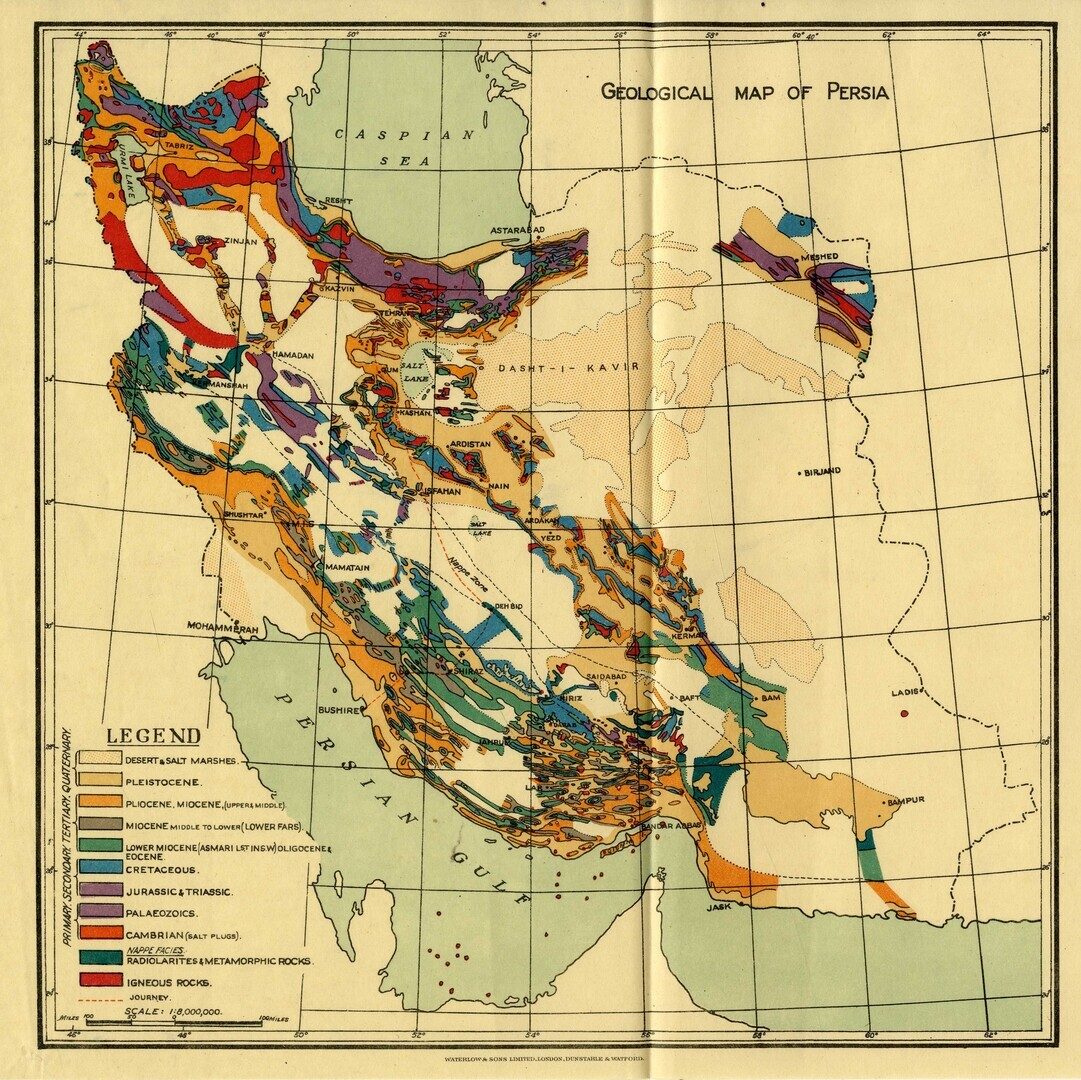Preliminary Report on our Journey in Persia During the Winter Season 1924-1925.
Bockh, Hugo de / James S. Lister & Others.
Synopsis
No copies at Copac. EXTREMELY RARE. A PRIVATELY PRINTED CONFIDENTIAL REPORT FOR THE DIRECTORS OF THE ANGLO-PERSIAN OIL COMPANY.
The purpose of the expedition was to follow up a similar journey made the previous year, resolve problems arising from that journey, and to make a closer study of the general tectonics in the Iranian ranges and the rocks forming them together with a geological investigation of the Arab Gulf.
The report is exclusively geological in nature. It is possible the most important achievement of De Bockh, in which of his six recommendations of sites for immediate action, four proved ultimately to be major discoveries.
The Hungarian geologist Hugo de Bockh (1884-1931) was appointed geological advisor to the Anglo-Persian Oil Company (APOC) in 1923 and carried out detailed surveys of Persia, the Gulf and Mesopotamia. He also did surveys in South America as the British company’s exploratory interests had become very widespread. A pioneering field work geologist, his activities did not give him much time for writing and confidential nature of many of his reports mean that he is possibly not as well-known as he deserves to be.
Before 1922, the APOC “seems to have been concerned with random opportunities brought to its attention rather than the licence of the territories which they name on the Persian Gulf Littoral.”
The Colonial Office wrote that it was not practical for the company to be granted a single exclusive licence over all the territories of the former Ottoman Empire, and that political conditions prevented licenses from Muscat, the Trucial States and Saudi Arabia, but negotiations were authorised with the Sheikhs of Kuwait and Bahrain under the aegis of the Political Resident.
The provenance of this copy is from Lord Cadman of Silverdale 1877-1941 (armourial plate verso front cover), a British mining engineer and petroleum technologist who became chairman of AOPC. A Mr. Davis (letter in secretarial hand from Lord Cadman sending him this book) attached on front fly leaf.
Excerpts from the report: “One may conclude that the islands of the Persian Gulf do not represent the exposed portions of a continuous formation but rather if the sea-floor were elevated we should find that the Hormuz series would be confined to comparatively few isolated hilly patches”.
The area occupied by the Mesopotamian S.W. Persian geosyncline outlined by Dr. Hugo de Bockh in the preliminary report may be divided into the following tectonic units:
1- The Western continental region.
2- The Zone of autochthonous folding.
3- The Zone of Mappes.
On the Arabian borderland the report mentions that “ In Jabal Sanamold rocks outcrop which may be of a corresponding age to the Hormus series. The country of the south-east of Jabal Sanam is little known. Near Kuwait the Kuwait series has not been studied.
The Oman series is younger and less metamorphosed. It consists of dark blue, almost black, then pale-grey and reddish-tinged limestone, which are sometimes strongly crushed.”
He mentions in his first work on the geology of the Persian Gulf that “at Al Busa and Hamairan, in the “Hormuz inlier” similar rocks to Oman rocks occur. But the rocks in these localities are of Cambrian age”. (pp.6-7).








